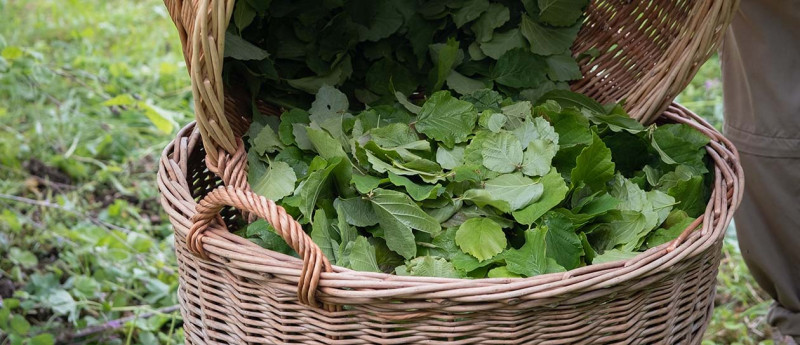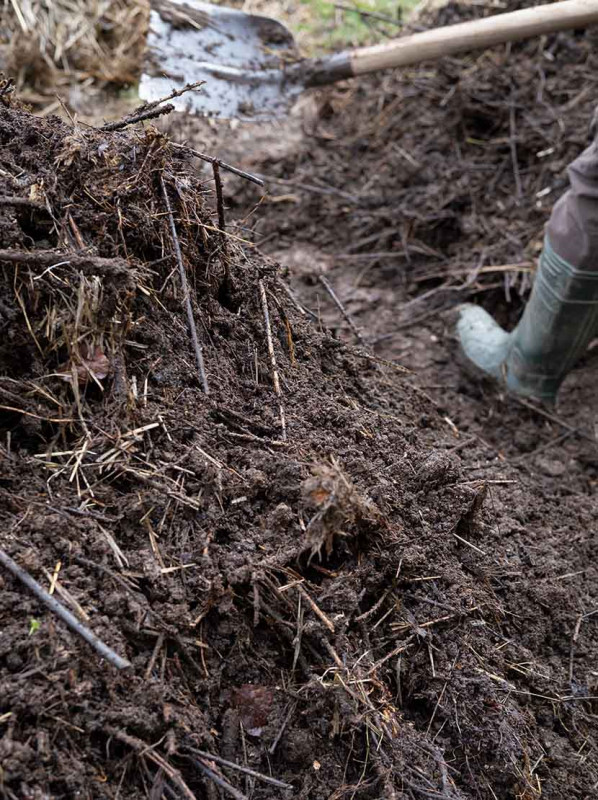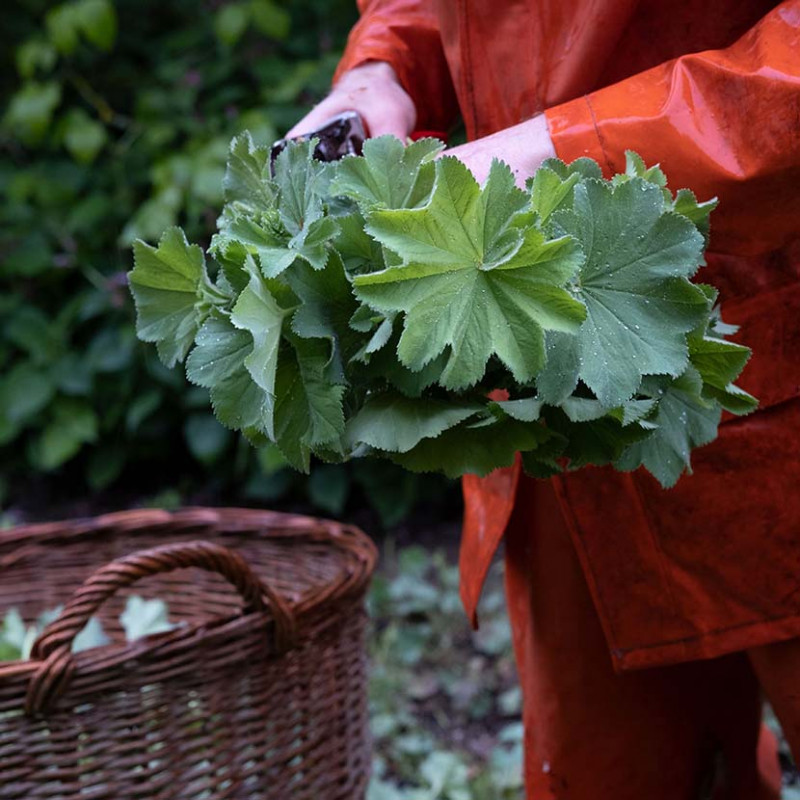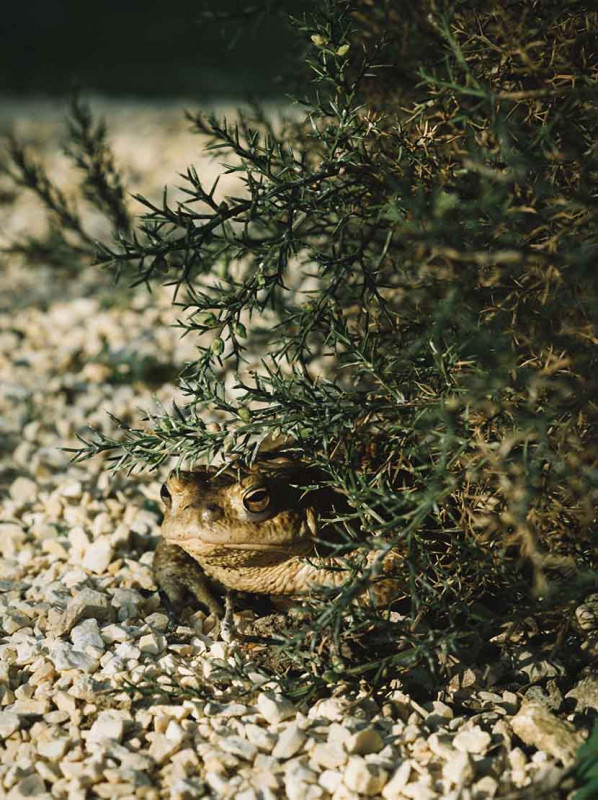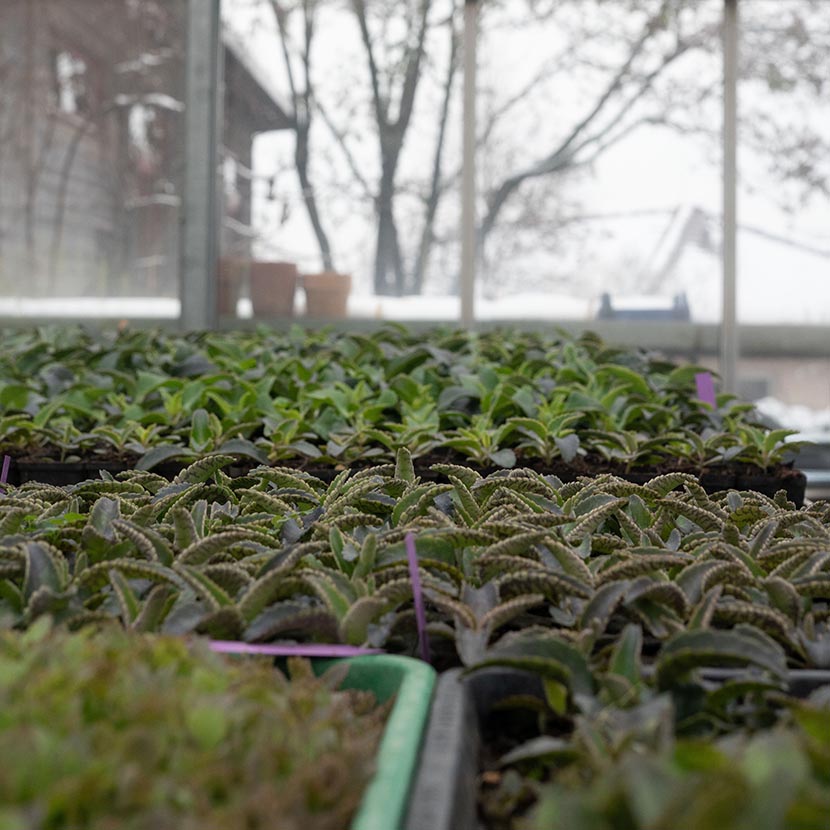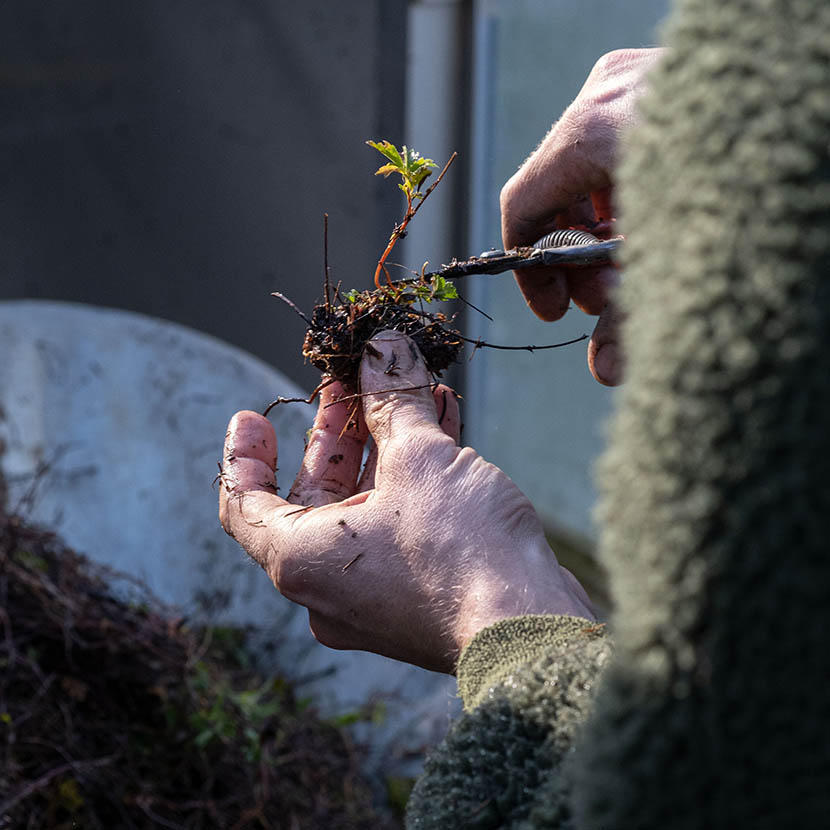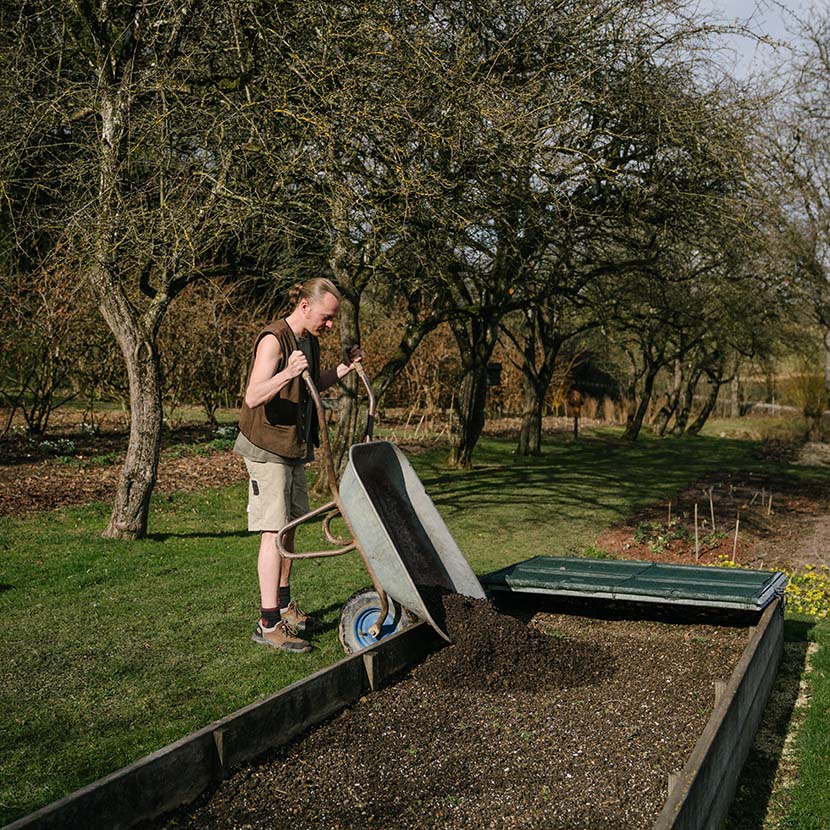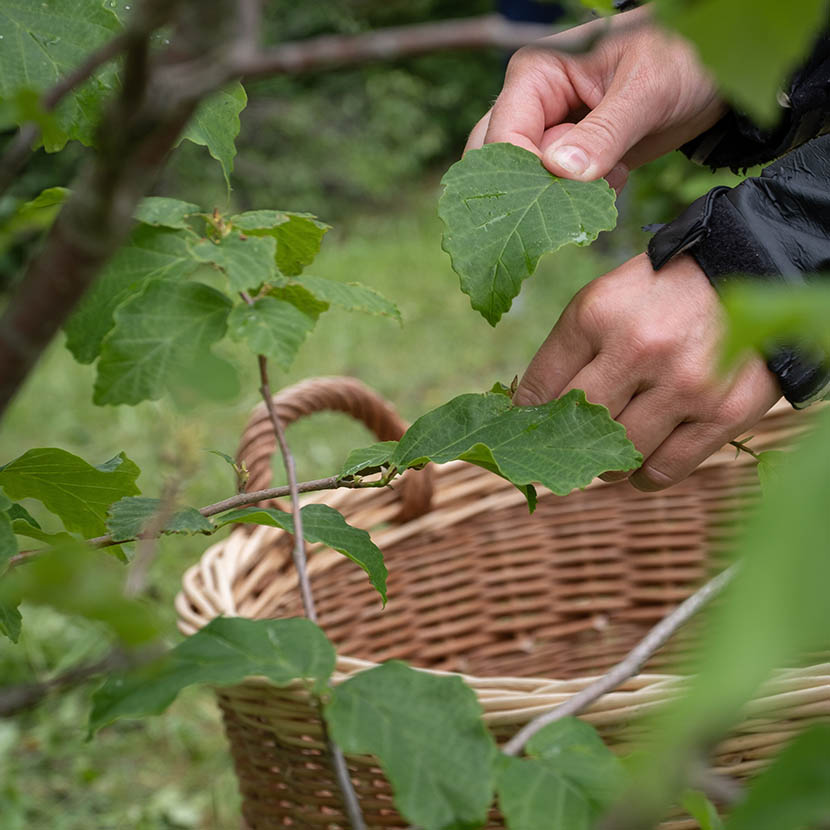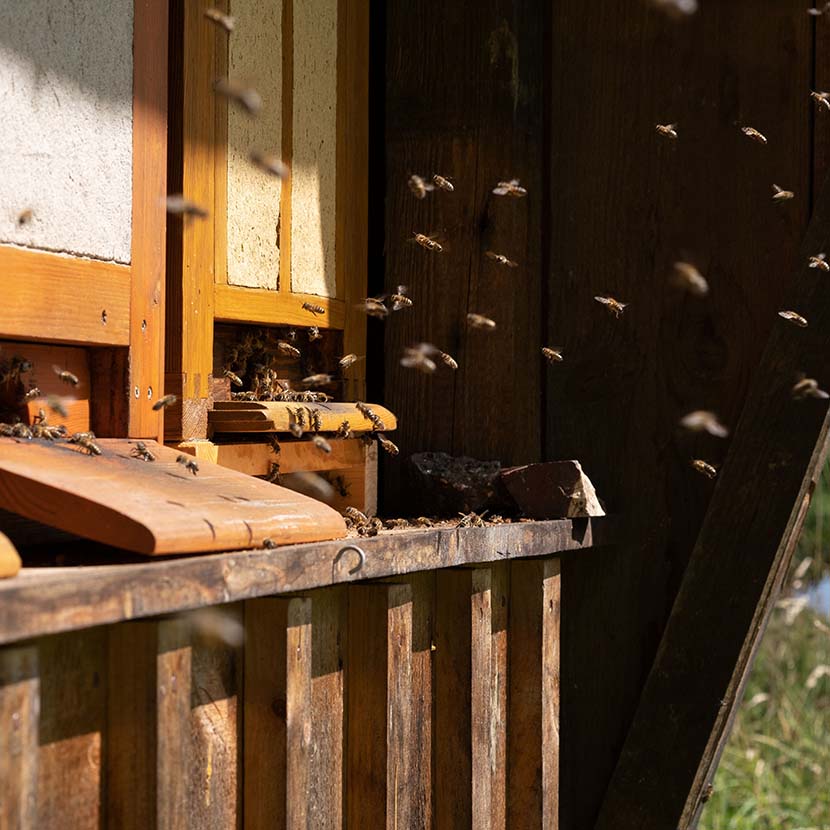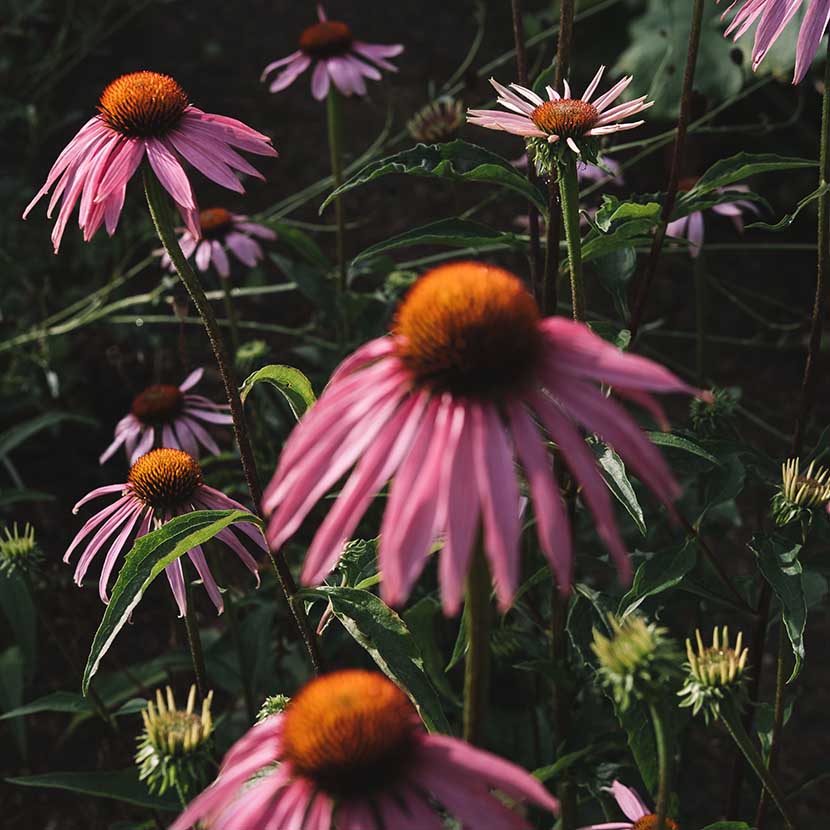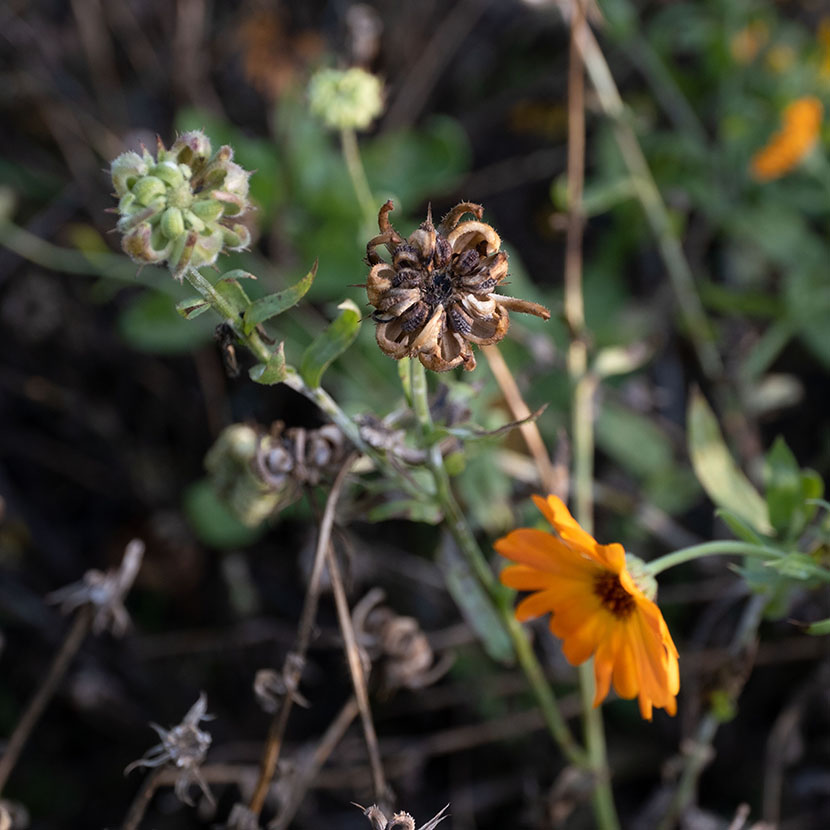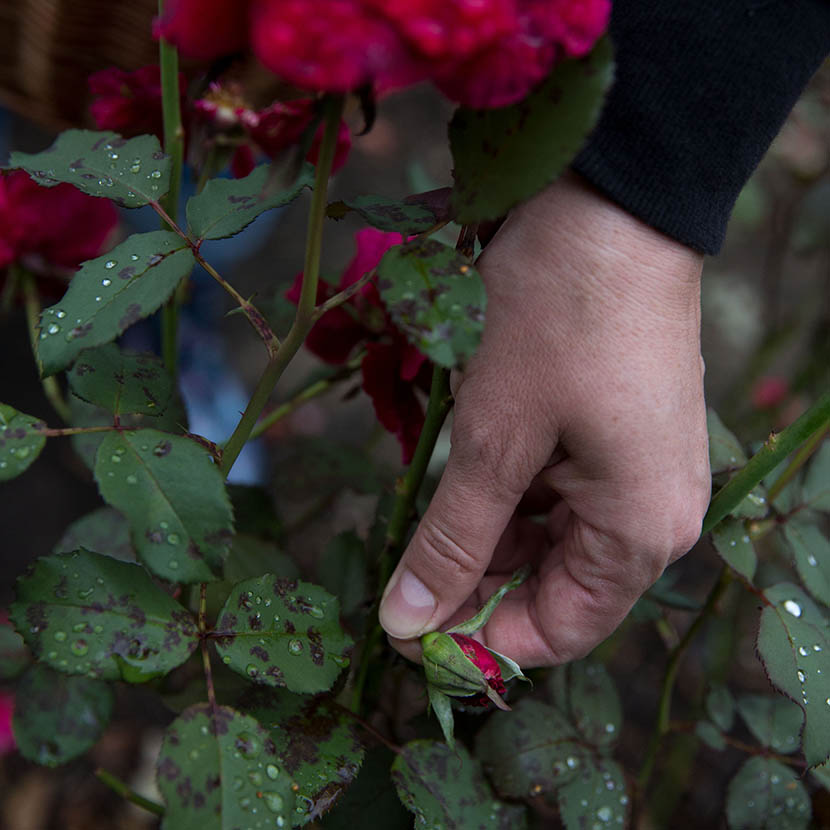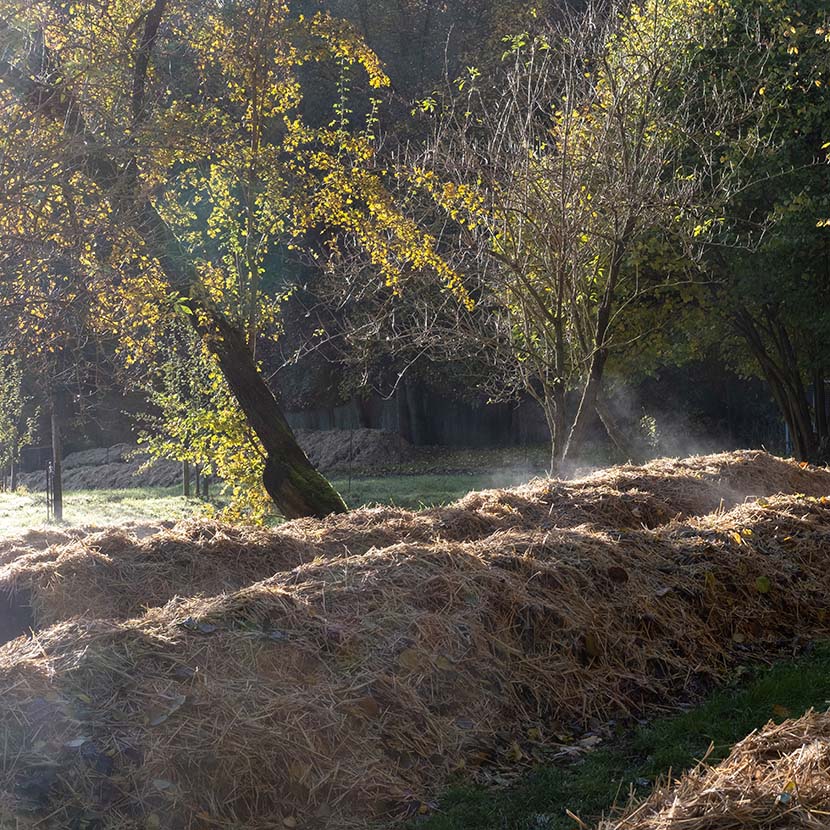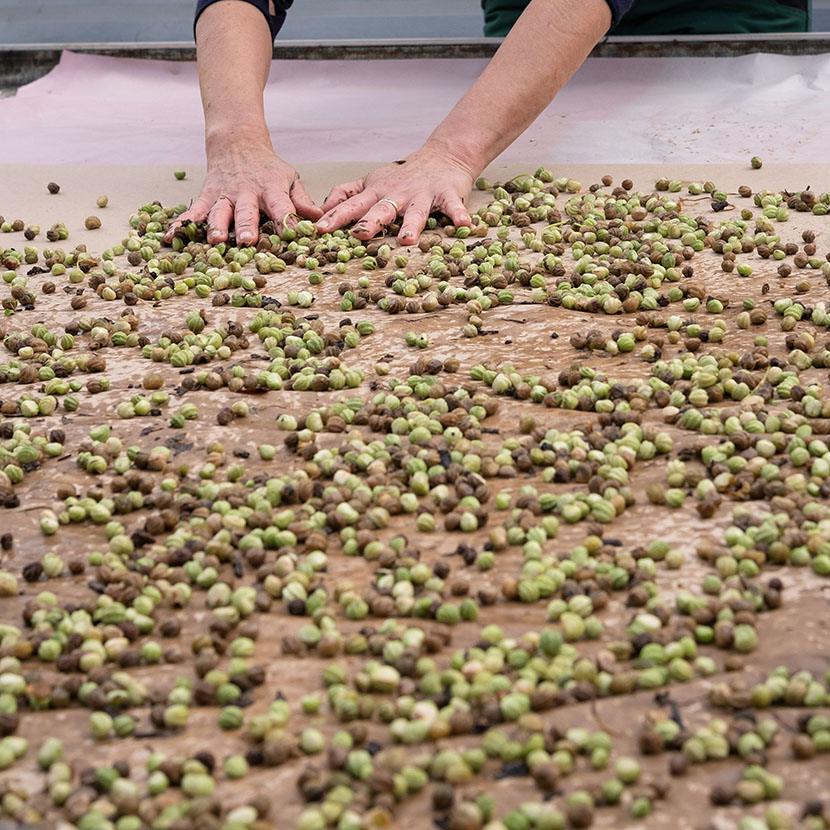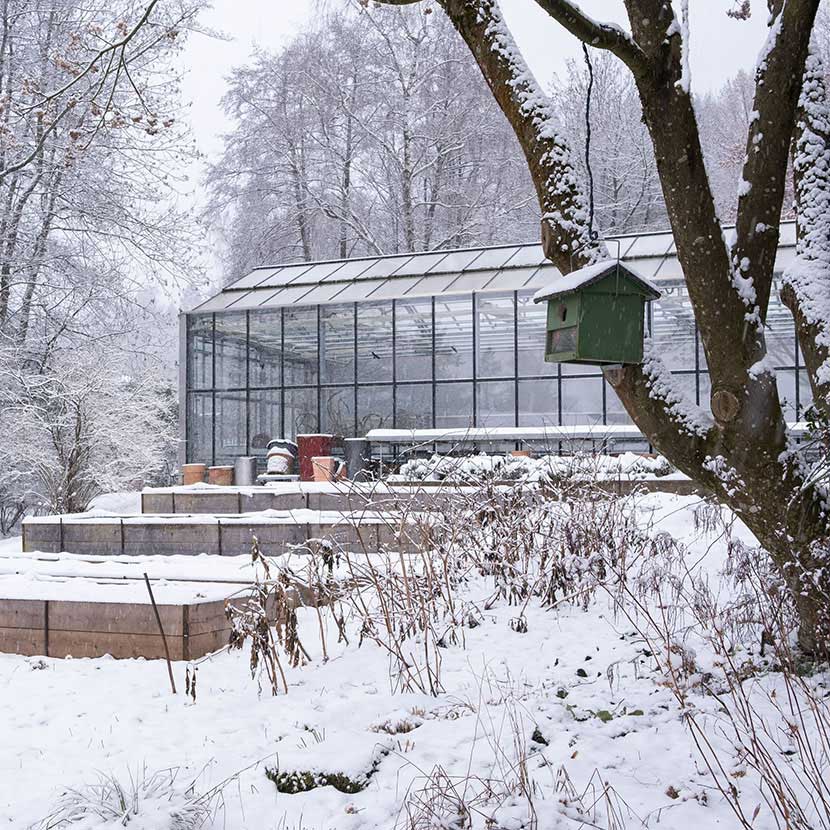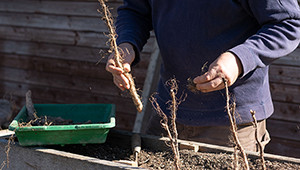Medicinal herb garden
Where precious raw materials grow.
Wherever possible, we like to harvest the plants used in Dr. Hauschka Skin Care from our very own medicinal herb garden. This is located directly behind our oldest company building in Eckwälden. Our work here adheres to many different rhythms, creates a closed natural ecosystem, and leaves room for wilderness. It is a real oasis.
Biodynamic farming.
Our medicinal herb garden covers around five hectares where our dedicated gardeners cultivate the land biodynamically based on nature’s own rhythms. What does this mean, exactly? It means we use our own seeds to grow the next generation of plants, which thrive in the closed ecosystem of our garden – a single organism that comprises the living soil, the surrounding environment and the climate into which the plants grow. We work with compost, crop rotation and green manuring, constantly observing how the garden is developing and always gathering new experiences – particularly in these times of changing climate conditions. We never stop learning.
Compost – our garden’s gold.
Various compost heaps play an integral role in our medicinal herb garden. They provide the sustainable structure that is required for soil and plants to thrive in harmony. But not all compost is the same – for example, we differentiate between leaf and dung compost. Each heap is hand-turned an average of four times before it reaches maturity. This way, we can directly monitor the changing quality of the compost. After turning, our gardeners add various biodynamic preparations to the compost. Nettle, chamomile, yarrow, oak bark and dandelion all help the compost to reach its full potential. Finally, a thick layer of straw provides each heap with a protective barrier.
Biodiversity: variety over monocultures.
More than 150 of the various medicinal plants that we use in the production of Dr. Hauschka Skin Care products and WALA Medicines are cultivated in our own medicinal herb garden. With our garden, we have created a colourful biotope and a unique area of biodiversity – with shady wooded areas and bright sunny spots, flower beds and meadows, trees and shrubs. The garden not only provides the perfect conditions for each and every plant, but also for multiple animals. We keep several bee colonies and provide nesting holes for birds, piles of stones for lizards and wild bees, and a pond for frogs, toads and multiple other species. Our medicinal herb garden provides a stable habitat and varied food supply all year round.
Carefully and by hand.
Each plant in our garden receives dedicated care and attention. Our gardeners harvest leaves, blossoms, fruits and roots by hand all year round – and these are then processed to produce our plant extracts. All the plant-processing departments are located right next to the garden to ensure the harvested raw materials are as fresh as possible when they arrive.
Our garden through the year.

